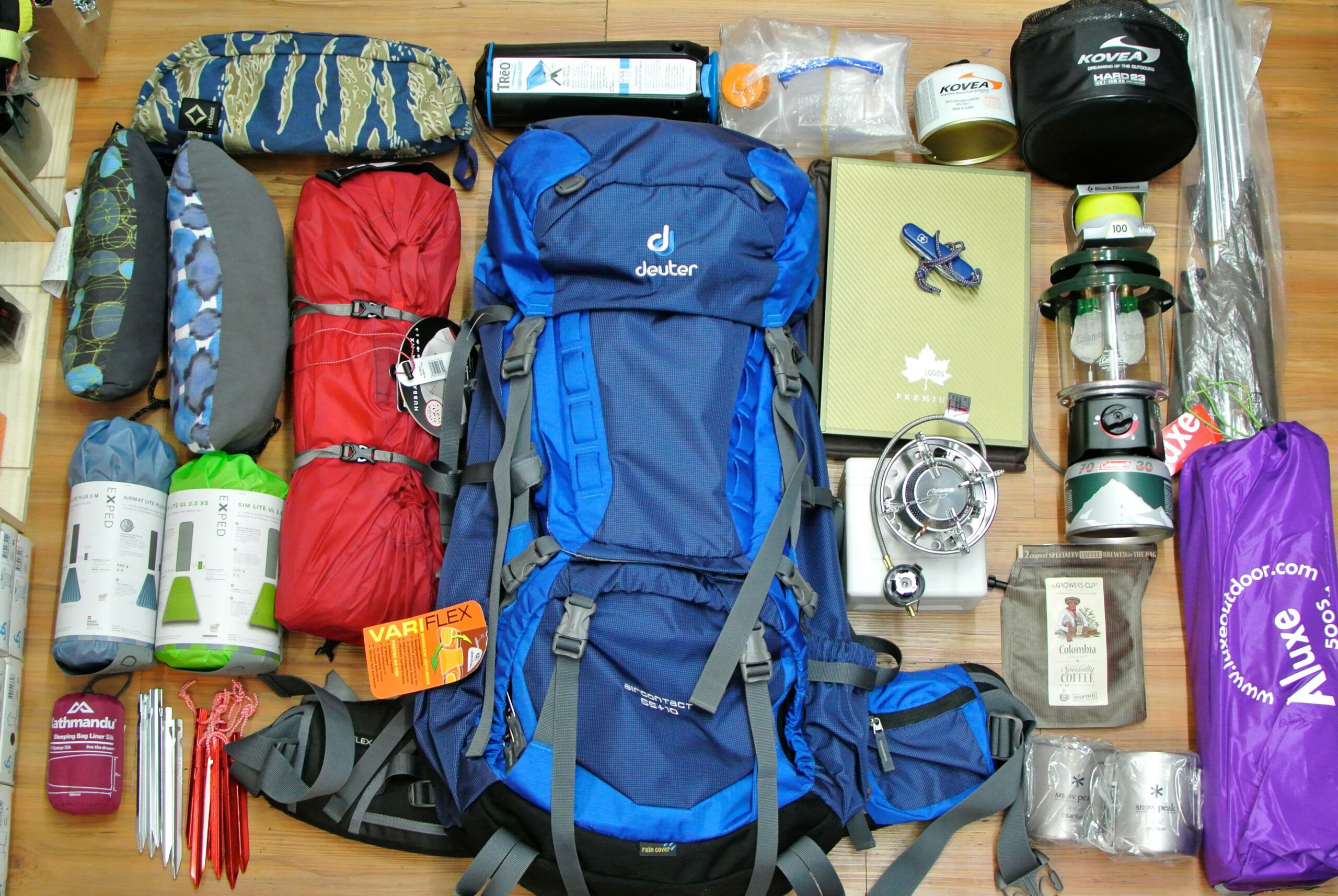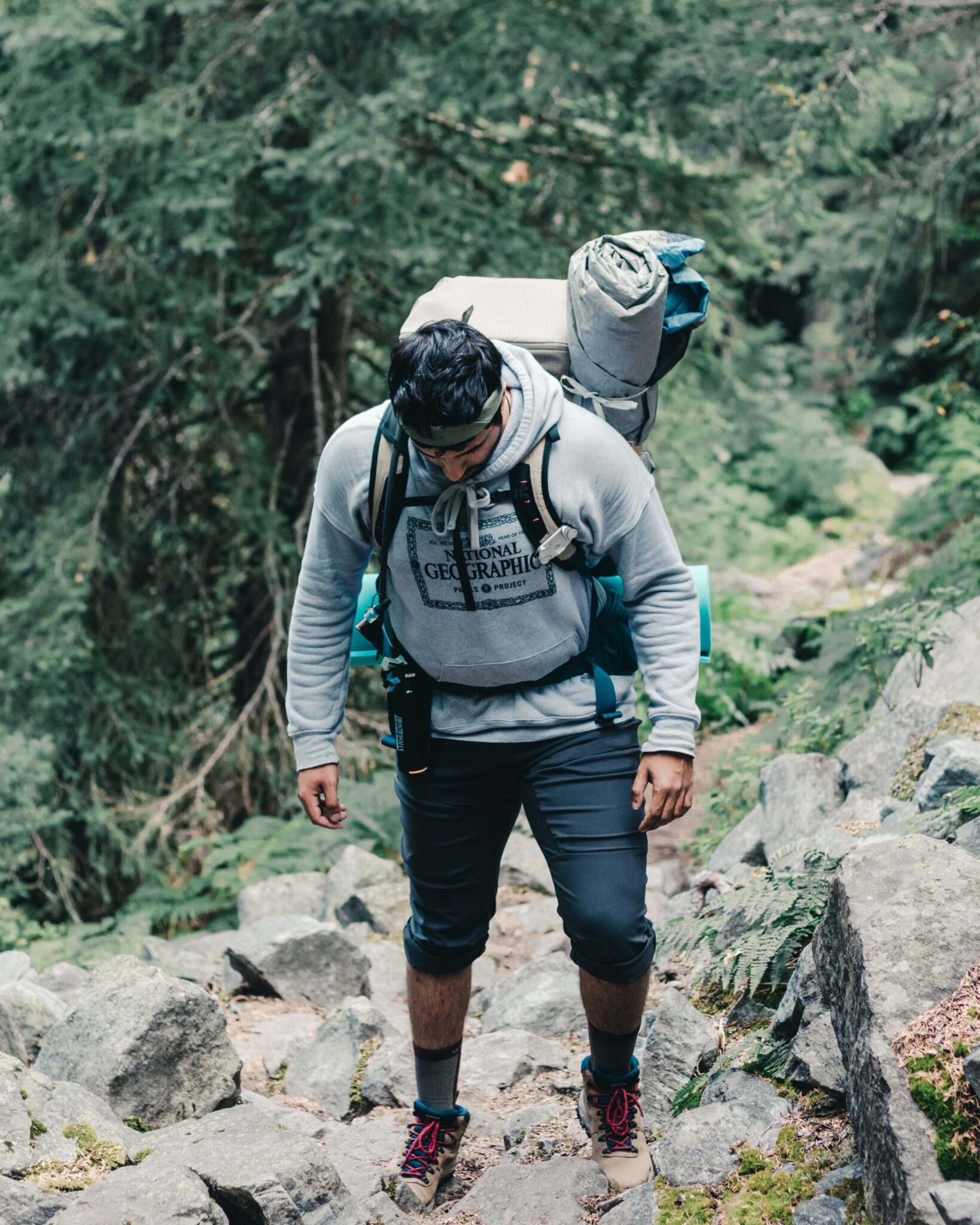So you decided to build a bug out bag and you’re feeling invincible—until you try to pick it up and your spine files for divorce. Welcome to the club!
Bugging out is less about owning a tactical spork and more about not making the same goofy mistakes everyone makes at first (including yours truly).
Here are my top 10 beginner blunders and how to fix them before your first mile turns into your last.
Overpacking Your Bug Out Bag Like You’re Moving House
The mistake: 70 pounds of gear “just in case,” plus a cast-iron skillet because you saw it on Instagram.
Why it happens: Anxiety + shopping carts.
Fix: Aim for 20–25% of your body weight max. Pack to mission, distance, duration, and weather, not vibes. If it doesn’t cover shelter, water, food, medical, navigation, comms, clothing, fire, or admin (IDs/cash), it’s on probation.
Cotton Kills: Wearing the Wrong Clothing
The mistake: Cotton hoodie + jeans + soggy socks = hypothermia.
Why it happens: Cotton is comfy… when dry.
Fix: Wool or synthetics next to skin; layers you can vent. Pack two pairs of quality socks and liner socks. Bring a warm hat and light rain shell year-round. Your future toes say thanks.
Boots That Betray You
The mistake: New boots in the morning. Blisters by the afternoon.
Why it happens: You meant to break them in, but never got round to it.
Fix: Break in footwear with loaded walks. Carry moleskin, leukotape, blister pads, and spare socks. Fit matters more than brand. Trail runners are much better than mountaineering boots for most lowland routes.
First-Aid Kit = Band-Aids + Hope
The mistake: Cute tin, zero capability.
Why it happens: Pre-made kits look complete.
Fix: Build a practical kit for your bug out bag: pressure bandage, gauze, tape, triangular bandage, meds (pain reliever, antihistamine, anti-diarrheal), blister care, gloves, and your prescription meds. Add a small trauma card with steps for major bleeding.
Operations Security (OPSEC)
The mistake: Tactical runway show + broadcasting your route to everyone.
Why it happens: Enthusiasm.
Fix: Be the gray person. Neutral colors, no jangly gear, no “SAVE THE GOLD BARS” patches. Tell one trusted contact your plan; the internet doesn’t need to know.
Forgetting Seasonality
The mistake: Summer kit in winter. Hypothermia is not a personality.
Why it happens: We pack our bug out bag once and declare victory.
Fix: Seasonal audit every three months. Swap layers, sleeping system, and stove fuel. Add hand warmers, or sun gear as appropriate.
Cashless in a Card World
The mistake: Assuming card readers will smile during outages.
Why it happens: We never use cash… until we need to.
Fix: Carry small bills (e.g., £5/$5 and £10/$10 notes). Keep coins for transit or vending. Hide a backup stash in your bug out bag backpack.
Documents and IDs MIA
The mistake: No identification, no medical info, no copies.
Why it happens: Paperwork lives in the drawer of chaos.
Fix: Create a documents pouch: copies of ID, emergency contacts, allergies/meds list, insurance info, a few passport photos. Encrypt digital copies on your phone.
Vehicle Dependency Without Vehicle Preparedness
The mistake: “We’ll drive!” (car: empty tank, low tire, mystery squeak)
Why it happens: Magical thinking.
Fix: Keep fuel tank at least half full, spare tire aired and tools ready, jump pack, fluids, maps, and a car bug out bag (water, snacks, blankets, first-aid, lights). Know foot route if roads are blocked.
Camp Setup Chaos
The mistake: Arriving at dark, then discovering you hate your tent.
Why it happens: You never practiced in wind, rain, or moonlight.
Fix: Practice pitching shelter in foul weather. Pack stakes/guylines, groundsheet, and a headlamp within easy reach. Pick sites with drainage, overhead safety, and low profile.
Building a Better Bug Out Bag (Friendly Fixes You Can Do This Week)
The 10-Minute Pack Audit
- Dump the bag on the floor.
- Put back only mission-critical items (shelter, water, food, med, nav, comms, clothing, fire, admin).
- Weigh it; aim for that 20–25% body-weight cap.
- Anything left must earn its ride: “What problem does this solve that nothing else does?”
The Parking-Lot Drill (30–60 Minutes)
- Walk a mile with your pack.
- Stop: filter half a liter, boil water, make a hot drink, and set up your shelter.
- Pack it all up. You just learned more than 20 YouTube videos.
The Route Rehearsal
- Drive or cycle your primary and alternate routes to the first safe waypoint.
- Mark water sources, bridges, choke points, and quiet cut-throughs.
- Add notes to your map (“good overpass shelter,” “shop that takes cash,” “sketchy dogs”).
The Feet First Protocol
- Break in footwear; rotate sock changes every 2–3 hours on long walks.
- Treat hot spots immediately (tape beats bravery).
- Elevate feet at breaks; your future knees are applauding.
What to Pack (Brief, Reality-Checked List)
Shelter & Sleep
- Lightweight tent/tarp + bivy, stakes/guylines, compact sleeping bag or quilt rated for season, sleeping pad.
Water
- Filter or purifier, chemical tabs, 2–3 L carry capacity (bottles + bladder), collapsible backup bag.
Food & Cooking
- No-cook day one (bars, tuna, nuts), quick-boil meals for after; stove + fuel matched to menu, metal pot + lid, spork, lighter + backups.
Clothing
- Base layers (non-cotton), mid-layer, shell, hat, gloves, 2 spare sock pairs in a dry bag.
Medical
- Pressure bandage, gauze, tape, meds, blister kit, gloves, tweezers, alcohol wipes, personal prescriptions.
Fire
- 2–3 ignition sources (disposable lighter, ferro rod, storm matches) + tinder.
Navigation & Comms
- Map, compass, whistle, headlamp + spare batteries, phone with offline maps + power bank.
Admin
- Cash, IDs/copies, contact list, small notebook/pencil, marker, duct tape.
Safety & Comfort
- Knife or multitool, sunscreen, bug dope, toilet kit (trowel or bags), small repair kit, morale item.
Remember: Pack your bug out bag high-use near the top, heavy close to your back, waterproof critical stuff (liners or dry bags).
Mindset: Pace, Plan, and Pivot
- Slow is smooth; smooth is fast. Sprinting the first mile is the slowest way to finish.
- Checkpoints every hour: direction, distance, water, feet, plan. Course-correct early.
- Be boring. Quiet colors, quiet behavior, quiet confidence.
- Don’t be a hero with hazards. Flooded streams, unstable slopes, and angry animals don’t care about your itinerary.
Quick FAQ for First-Timers
Q: How far should I plan to walk in a day?
A: On mixed terrain with a pack, 12–20 km / 7–12 miles is realistic for beginners. Terrain, weather, and fitness rule the day.
Q: Can I bug out with just a sling bag?
A: For short urban hops to a safe waypoint, maybe. For anything longer, you want water capacity, shelter, and layers—which means a real bug out bag backpack.
Q: Tinned fish? Really?
A: Protein, fat, salt, and morale. Also doubles as social distancing if you open sardines in a crowd.
The Bug Out Bag Takeaway
Beginners don’t fail because they’re soft; they fail because they don’t rehearse. Avoid the big 10 mistakes by lightening your load, training your feet, matching gear to reality, and practicing small drills often. You don’t need perfection—you need repeatable competence and a sense of humor when the stove sputters.
So trim that pack, lace those shoes, and walk your first shakedown mile this week. Your future, less-blistered self will send a heartfelt thank-you note—from the finish line, not the first aid tent.
Good luck,
Henry







0 Comments